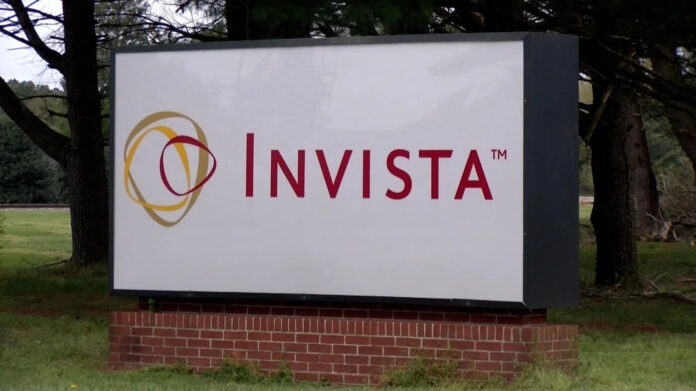In the corporate world, legal battles can sometimes become as integral as day-to-day operations. One significant conflict that has shaped the industrial landscape over the years involves Invista, a subsidiary of Koch Industries, and its former owner, DuPont. These legal proceedings are of notable interest due to the major issues surrounding them, including environmental compliance, patent rights, and technology disputes. In this article, we’ll explore the intricate details of the Invista lawsuit and its impact on the company.
Is There a Lawsuit Against Invista?
To understand the dynamics at play, it’s critical to identify the primary litigation involved in this saga. Invista is no stranger to lawsuits; on the contrary, they have been at the center of several contentious legal disputes. The most prominent of these cases is the legal battle against DuPont, which covers a spectrum of serious allegations, from environmental and safety non-compliance to patent infringement and trade secret misappropriation.
What is the Invista Lawsuit About?
At the heart of the Invista versus DuPont legal confrontation are several core issues. In 2008, Invista took legal action against DuPont, accusing the latter of failing to ensure that the 14 facilities acquired in 2004 met necessary environmental and safety standards. Invista claimed that it spent a staggering $140 million to rectify these violations and anticipated further expenses to meet federal and state pollution control agreements. With compensatory damages sought to the tune of $744.6 million, the lawsuit also revealed allegations that DuPont misled Koch Industries regarding the state of these plants.
Additionally, the legal battle encompasses patent and technology disputes. DuPont charged Invista with breaching a patent agreement, accusing it of using DuPont technology to manufacture nylon engineering resins unlawfully. This dispute also involves Invista’s chemical process technology known as “Gen I,” used for making ADN, a key component in producing nylon 6.6.
Invista Overview
Invista is a powerhouse in the chemicals and textile manufacturing industry, primarily dealing with fibers, resins, and various intermediates. As a vital enabler of manufacturing excellence, Invista has built a reputation for pushing boundaries. The company became a subsidiary of Koch Industries when its assets were acquired from DuPont for $4.2 billion in 2004. This deal included 14 manufacturing sites and various technological assets, laying the groundwork for Invista’s subsequent legal disputes with DuPont.
Legal Proceedings and Current Status
The legal proceedings have exhibited a complicated course, marked by multifaceted claims and counterclaims. DuPont argued that Invista failed to adhere to contract terms related to environmental indemnification and denied any liability for Invista’s costs. Separately, Invista faced patent-infringement claims from DuPont, who alleged misuse of their nylon production technology. As such, the court proceedings have spanned a multiplicity of legal and jurisdictional issues, with varied outcomes. The “Gen I” technology case encountered jurisdictional challenges, resulting in the dismissal of Invista’s claims under federal law, while DuPont’s attempts to prevent Invista from acquiring William Barnet & Sons, LLC, ended moot due to a breakdown in acquisition negotiations.
Who Filed the Lawsuit?
The primary lawsuit we’re focusing on was initiated by Invista against DuPont in 2008. Invista alleged that DuPont’s serious oversights regarding environmental compliance directly harmed the new owner. However, both parties have been aggressive in their legal maneuvers, with DuPont counter-filing suits concerning patent-infringement and seeking to block business acquisitions that they argued violated initial contractual agreements.
Impact on Invista
The consequences of these contentious legal proceedings are widespread, significantly impacting Invista’s operational and financial landscapes. The necessity to allocate hundreds of millions toward rectifying environmental issues pulled significant resources away from other business areas. Moreover, the ongoing patent and technology disputes represent not just a financial burden, but a potential barrier to their technological advancements and market competitiveness. Legal battles can alter public perception, leading to a challenging environment not only from a business operations standpoint but also from a reputational perspective.
What Will Happen Next?
Predicting the future course of extensive legal proceedings is inherently complex. As it stands, Invista is likely to continue navigating through the intricate legal landscape, endeavoring to resolve the remaining unresolved disputes to facilitate smoother operations. The outcomes could shape not only the operational strategies of Invista but also influence industry standards concerning legal accountability in business acquisitions. As legal moves unfold, industry observers will watch closely to gauge the ramifications for both Invista and DuPont, and more broadly, for industrial players engaging in large-scale acquisitions with complex legacies.
Conclusion
The legal disputes involving Invista and DuPont underscore the challenges of large-scale industrial acquisitions and the complexities tied to compliance, innovation, and technology ownership. For Invista, these lawsuits not only map out a path of financial and operational hurdles but also a saga of legal ingenuity. Analyzing these cases illuminates how businesses can better prepare for and navigate such disputes. As we continue to watch the broader implications unfold, these cases remain a testament to the intricacies and risks of corporate transactions. Meanwhile, for updates on financial and industry trends, you can visit Six Figure Journal for more insights.


